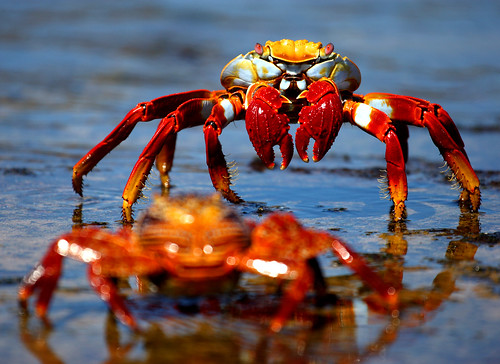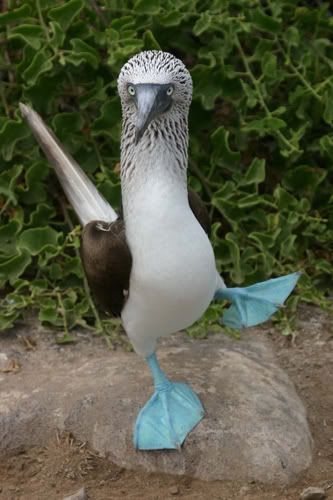If you travel to Galapagos make sure to make a stop in James Bay… This bay, on the northeast side of Santiago, is a lovely stopping place in itself, but its chief function is the starting point for three visitor sites: the salt crater, the fur seal grottos, and Espumilla Beach, with its flamingo lagoon. The first two are reached from the same anchorage, and Espumilla Beach is a short boat ride to the northern end of the bay.

Before moving to the visitor sites themselves, it’s worth noting that this Galapagos bay usually offers a particularly good chance to savor the sea life around you. If you travel there in the early morning or late afternoon, sit on deck and watch what goes on around the boat. The boobies plunge for fish, and the pelicans dive and then swim along the surface, followed closely by the brown noddies, who hope that fish will spill out of the pelicans’ pouches. Sometimes a noddy even sits on a pelican’s head to be really close to the action. Sally lightfoot crabs scuttle over the exposed black rocks near the shoreline. (They’re especially easy to see on the rock protruding, fingerlike, above the surface near the point where you will disembark.
When I was there in an El Niño year, this Galapagos anchorage was the place where I saw the most storm petrels (Oceandroma castro) at once, flitting and dipping over the water’s surface as they fed. The water was so calm that in the flat light of evening it gleamed as though dark oil had been poured on it. Only these tiny birds, themselves nearly completely back, relieved the unbroken somberness as I peered down onto the water.





